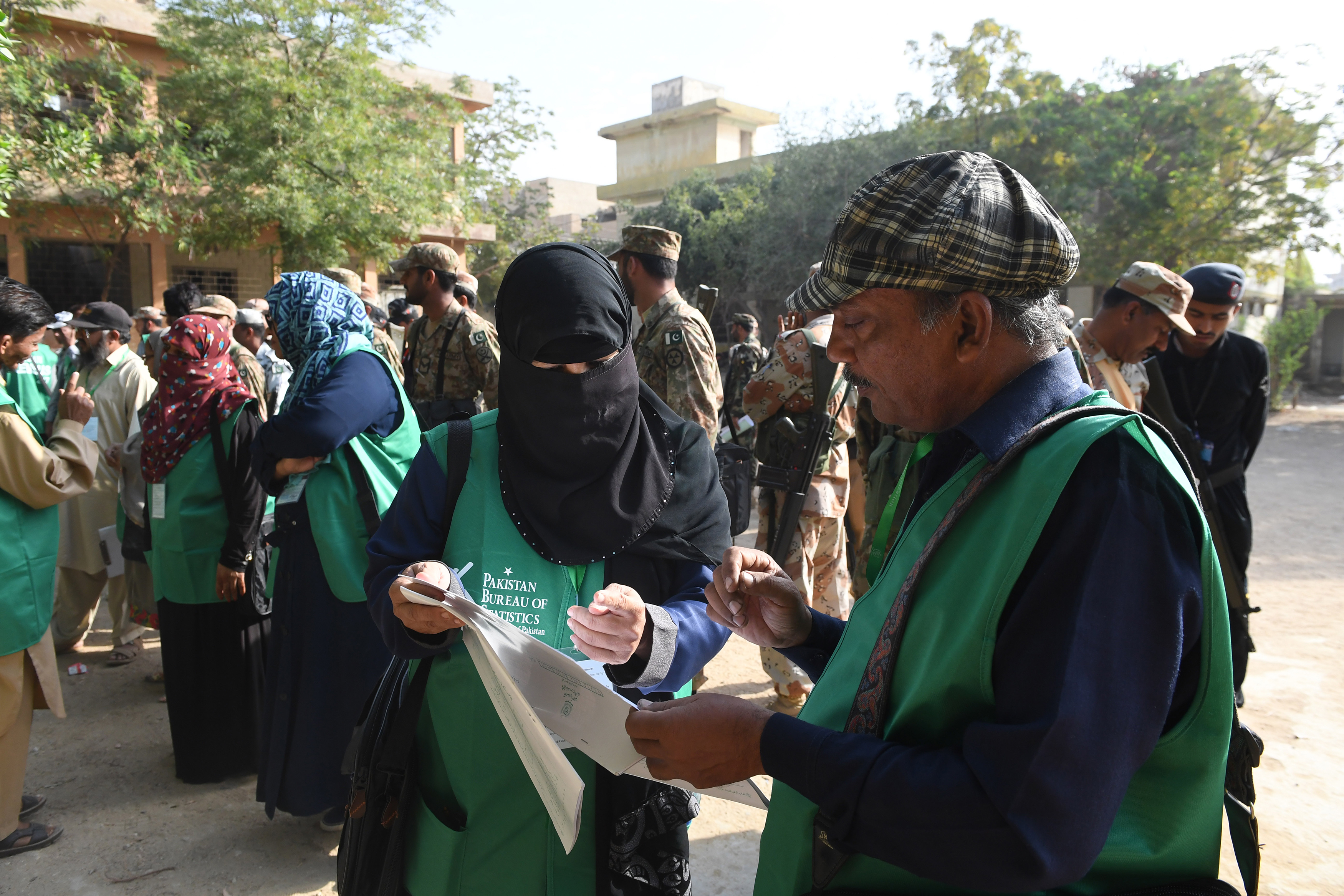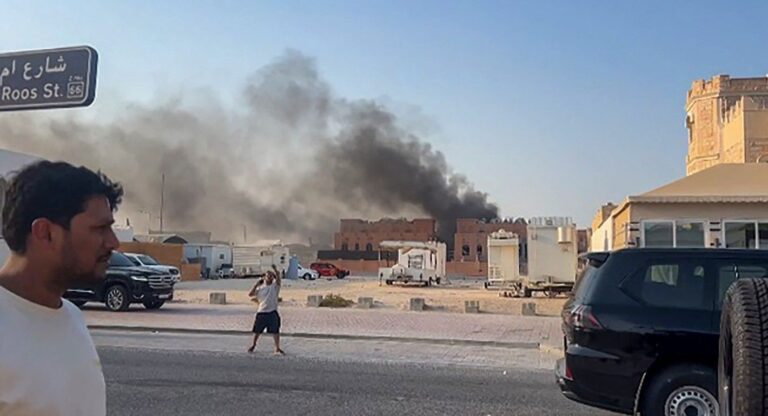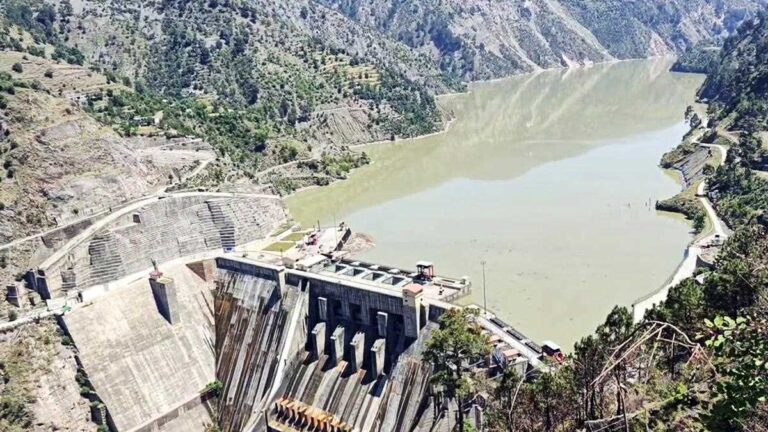
Photo Credits: AFP
Farhan Hanif Siddiqi
Pakistan held its sixth census in 2017 which put Pakistan’s population at 207.7 million people with an average annual growth rate of 2.4% over a period of 1998-2017. Compared to the last census held in 1998, the results show an overall increase in population by 57%.
However, an interesting trend is witnessed at the provincial level. The results indicate a percentage decrease in the share of Pakistan’s largest province Punjab (from 55.6% of the total population in 1998 to 52.9% in 2017) while an increase is observed in the provinces of Khyber Pakhtunkhwa (13.4% in 1998 to 14.6% in 2017), Balochistan (4.9% in 1998 to 5.9% in 2017) while the share of Sindh has remained constant, 22.9% in 1998 and 23% in 2017. The results are still preliminary while conclusive results will be confirmed in April 2018.
According to provisional results, Pakistan’s urban population shows a growing trend with 36.38% of the population living in urban areas. In 1998, the share of the urban population was 32.52%. This means that approximately 64% of Pakistan’s population still lives in rural areas. This ratio was 65.6% in 1998. All four provinces shown an increase in urbanization indicators with a majority of Sindh’s population (52.02% up from 48.75% in 1998) residing in urban areas, followed by Punjab (36.71% up from 31.27% in 1998), Balochistan (27.55% up from 23.89% in 1998), KP (18.77% up from 16.87% in 1998), while ironically Islamabad, Pakistan’s capital, shows a radical decline in urbanization with 50.58% living in urban areas down from 65.72% in 1998.
Karachi is still the largest city in Pakistan with a population of approximately 14.9 million, followed by Lahore 11.1 million and Faisalabad 3.2 million. Figures indicate that Lahore is Pakistan’s fastest growing city with a population of 5.1 million in 1998 which has now doubled while Karachi’s population in 1998 was 9.3 million. Women’s share in the total population has increased by 1% which now stands at 101.3 million (48.8%) while in 1998, the female population ratio was 47.9%.
Three areas where census results have led to debate and criticisms are:
A. Definition of urban areas and census results
Many economists and social scientists in Pakistan contested the “administrative” definition of what constitutes urban areas as opposed to “characteristics” such as common utilities, roads, sanitation, schools, centres for trade and commerce and health and high literacy rate. The administrative criterion used by the government defines urban areas as a municipal corporation, a town committee or cantonment board, a criterion that has purported to understate Pakistan’s urban population. People residing outside these administrative boundaries are thus classified as rural even though many who live only slightly outside this boundary are deemed “rural” while all their social and economic activities are concentrated in the city. Political economists contend that agriculture now contributes to only 20% of Pakistan’s GDP and rural areas have now become peri-urban developing linkages with urban areas.
B.Constituency delimitation for the 2018 elections
The constituency delimitation bill has now been passed both by the National Assembly and Senate. Because of a decline in its population, the largest province, Punjab, has its seats in the National Assembly reduced by nine while the smallest province, Balochistan will witness an increase of three seats, KP province 5 seats and Islamabad one more seat. The reduction in the seats of Punjab is a drastic development as it is the dominant power wielder in Pakistan’s multi-ethnic state. The overall number of seats in the National Assembly though remains the same, that is, 272.
C. Ethnic Politics and Conflict
The Sindhis and Mohajirs, have challenged census results stating that the government has deliberately understated Karachi’s and Sindh’s population with the MQM alleging pre-census rigging specifically the enumeration of census blocks. The issue is important because it impacts the allocation of funds and resources from the central government although it must be emphasised that the new financial distribution formula after the 7th NFC Award also includes besides population, revenue generation, inverse population density and poverty/backwardness.
Following are the major expectations and implications for the future:
- The definition of rural and urban areas in the census does not reflect Pakistan’s growing middle class population which resides in urban areas. Marked social change has taken place in Pakistan leading economists to contend that 42% of the population belong to the upper and middle classes with 38% counted as the middle class. According to Akbar Zaidi, “if these numbers are correct then 84 million Pakistanis belong to the upper and middle classes, a population size which is larger than that of Germany.”
- A rising middle class means that consumer durables and electronic items such as TVs, refrigerators, deep freezers, mobile phones, automobiles are in high demand and consumer confidence is strong in the country, a fact cited by the State Bank of Pakistan.
- A rising population and consumerist middle class also means added pressure on the government to satisfy people’s essential demands including health, education, development and growth, security, transportation and sanitation. In concerted sectors, the state is inviting Foreign Direct Investment (FDI) with plans for foreign car manufacturers to set up their factories and plants in Pakistan including Volkswagen, Hyundai, Renault and Kia Motors.
- The census indicates a decline in Pakistan’s major administrative unit, the Punjab, a consequential development which will not only impact constituency seats but also the financial distribution formula between the provinces, with Punjab percentage share likely to go down further. This may well be a palliative for Baloch nationalists who contend that Punjab takes the predominant financial share while their position is undermined. With the stated upsurge in Balochistan’s population figures, their share in the financial distribution formula will register a further increase.
- While the figures may well be soothing to the Baloch, Mohajir and Sindhi ethnonationalists will utilize their alleged understated census figures to shore up their respective constituencies and electoral votes in the general elections. Ethnicity will be a major election slogan in rural and urban Sindh in 2018.
- For KP, the projected inclusion of FATA as part of the province elevates its population numbers but also presents a challenge on how to address social, political and economic neglect in the war-torn region.
- Finally, Sikh and Hindu minorities were not entirely satisfied with the census. Hindu civil society activists protested the separate category of “scheduled caste” demanding that they should have been included within the Hindu count while Sikhs were completed excluded.
In all, the census has left ethnic groups in Sindh and Sikh and Hindu minorities unsatisfied while also understating Pakistan’s urban population. While conclusive results are awaited, it is imperative that faults identified in the present census are addressed amicably and the next census takes place within the stipulated time reflecting Pakistan’s rapidly transforming socio-economic landscape.
Farhan Hanif Siddiqi is an Associate Professor at the School of Politics and International Relations, Quaid-i-Azam University, Islamabad.





114 thoughts on “Pakistan Census 2017: What does the data indicate?”
Comments are closed.